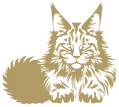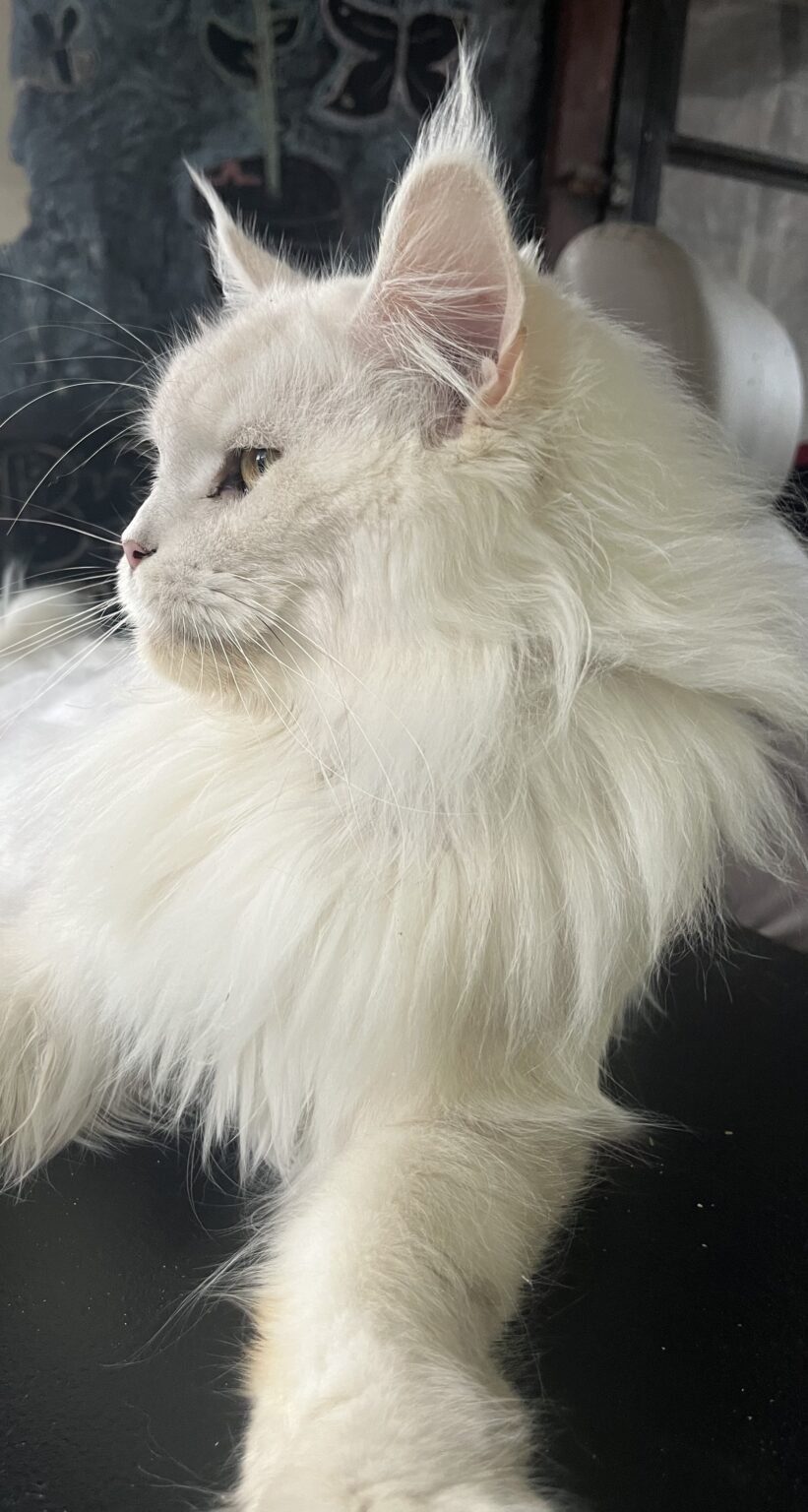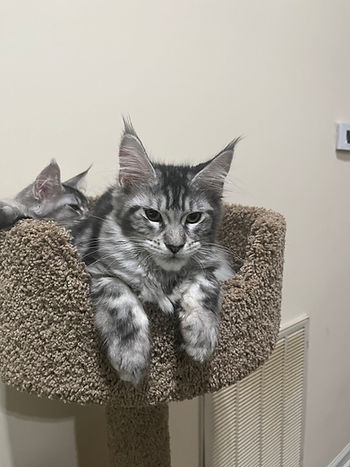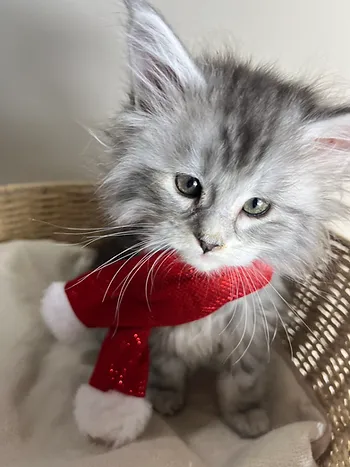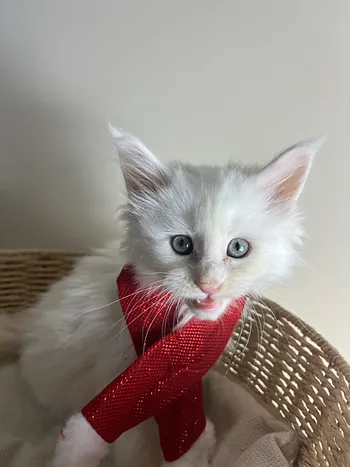You may have noticed that your Maine Coons meows vary in tone and frequency, each carrying its own unique meaning. Understanding what your feline friend is trying to communicate can enhance your bond and improve your caregiving. Maine Coons are known for their vocalizations, and by tuning into their sounds, you can decipher their needs, emotions, and desires. In this guide, we’ll explore the significance behind those distinct meows, helping you become more attuned to your cat’s personality and preferences.
Understanding the Maine Coons Meow
Your Maine Coon’s meow is more than just a sound; it’s a unique form of communication that conveys their feelings and needs. These cats possess an impressive range of vocalizations, from deep trills to soft chirps, each serving a distinct purpose. By paying attention to the nuances of their meows, you can better understand what your feline friend is trying to express, creating a stronger bond and enhancing your companionship.
The Unique Vocalization of Maine Coons
After observing your Maine Coon, you may notice that their vocalizations are distinct from other breeds. These cats often use a variety of sounds to convey different messages, making their communication highly individualized. With their expressive meows, trills, and chirps, Maine Coons have evolved to be not only charming companions but also adept communicators, ensuring you always know when they want your attention.
Contextualizing Your Cat’s Sounds
Along with recognizing their unique vocalizations, it’s necessary to consider the context in which your Maine Coon is meowing. Different situations can trigger specific sounds, whether they are excited, hungry, or seeking affection. Understanding these contexts will help you respond appropriately to your cat’s needs and strengthen your relationship.
Even within the same vocalization, your Maine Coon’s mood and the surrounding environment can alter the meaning behind their meows. For instance, a meow that sounds urgent in a crowded space may differ in tone when they are lounging in their favorite spot. By observing your cat’s body language and the circumstances surrounding their vocalizations, you will gain valuable insights into their emotions and desires, allowing you to cater to their needs more effectively.
Common Maine Coon Vocalizations
If you are a proud Maine Coon owner, understanding your furry friend’s vocalizations can deepen your bond. These cats are known for their unique sounds, which serve various purposes. From greetings to requests for attention, each meow carries a message that reveals your Maine Coon’s emotions and desires. By listening closely, you can better respond to your pet’s needs.
The Friendly Greeting
Along with their striking size and tufted ears, Maine Coons have a warm way of welcoming you home. When you walk through the door, your kitty might greet you with a soft, gentle meow, signifying happiness and affection. This vocalization is their way of showing you that they missed you and are excited to see you.
The Request for Attention
Along with the friendly greetings, your Maine Coon may also have a more demanding way of getting your attention. This vocalization can sound like a series of persistent meows, often occurring as your cat approaches you or even while you’re busy. It’s a clear signal that they’re looking for interaction and companionship, so be prepared to engage.
Attention is vital for the social and emotional well-being of your Maine Coon. When they vocalize their request, they’re not just bored; they genuinely crave your interaction. Whether it’s playtime, petting, or simply sitting together, your Maine Coon thrives on the bond you share. Responding to their calls will enrich your relationship and help ensure they feel loved and secure.
Interpreting Your Maine Coon’s Needs
Some cat owners often find themselves puzzled by their Maine Coon’s vocalizations. Each meow can convey different emotions or needs, making it necessary for you to decipher what your feline friend is truly trying to communicate. By paying attention to the context of their sounds and body language, you can better understand your Maine Coon’s desires and respond appropriately.
Hunger Signals
After a long day, it can be hard to differentiate between your Maine Coon’s meows. However, if your cat frequently meows while pacing around its food bowl or staring at you expectantly, it’s likely signaling hunger. You should take note of these specific vocalizations as they may indicate it’s time for their next meal.
Playfulness Indicators
Indicators of your Maine Coon’s playful nature include higher-pitched meows or chirping sounds, often accompanied by energetic movements. This vocalization is typically a request for interaction and playtime. As your Maine Coon engages in this behavior, it’s important for you to recognize that they are looking for stimulation and companionship.
In addition to vocalizations, your Maine Coon may display playful body language, such as swatting at toys or darting around the room. If you notice these behaviors alongside their meowing, it is a clear call for you to join in on the fun. Engaging in play not only meets their social needs but also strengthens the bond you share with your furry companion.

Emotional Communication Through Meowing
All cats communicate their emotions in various ways, and your Maine Coon is no exception. Their meowing is a significant form of emotional expression, allowing them to convey feelings of happiness, distress, and everything in between. By tuning into the specific tones and patterns of your Maine Coon’s meows, you can develop a deeper understanding of their emotional state and strengthen your bond with them.
Signaling Contentment
Through a soft, purring-like meow, your Maine Coon indicates satisfaction and comfort. This sound often accompanies relaxed body language, such as kneading, lounging, or slow blinking. When your cat’s meow has this gentle tone, it’s a clear signal that they feel safe and secure in their environment, making it a delightful expression of their contentment.
Expressing Discomfort or Distress
Meowing in a more frantic or high-pitched tone suggests that your Maine Coon is experiencing discomfort or distress. It’s important to pay attention to these vocalizations, as they often indicate issues that need addressing, such as hunger, pain, or anxiety. Your cat’s communication is their way of letting you know something isn’t right.
Indeed, recognizing the signs of discomfort or distress in your Maine Coon is vital for their well-being. A sudden change in their meowing tone could signal a range of issues, from minor annoyances to more serious health concerns. It’s important to monitor your cat’s behavior and respond appropriately to these calls for help. By being attentive, you not only ensure your cat’s comfort but also strengthen your trustful relationship with them.
The Role of Body Language in Vocalization
Keep in mind that your Maine Coon’s vocalizations are often accompanied by specific body language, which adds depth to their communication. Understanding how your cat’s posture, tail position, and ear orientation correspond with their meows can provide you with a more nuanced interpretation of their needs. For instance, a raised tail combined with soft meows typically indicates happiness, while flattened ears and growls may signal distress. Paying attention to these cues can enhance your connection with your feline friend.
Complementary Gestures
On top of vocalizations, your Maine Coon uses complementary gestures to express their emotions and intentions. A slow blink or a gentle headbutt often accompanies soft purring, signaling affection and trust. Conversely, if your cat swats at you while meowing, it may indicate irritation or the desire for personal space. Recognizing these gestures allows you to respond appropriately and foster a better emotional bond.
Understanding Combinations of Sounds and Movements
Movements often intensify the message conveyed through your Maine Coon’s vocalizations. For example, an enthusiastic meow paired with a playful pounce can indicate eagerness to play. Alternatively, if your cat emits a series of throaty yowls while pacing, they may be expressing frustration or anxiety. By analyzing these combinations, you gain insight into your cat’s mood and specific needs, helping you to meet them more effectively.
Indeed, recognizing the combinations of sounds and movements in your Maine Coon’s behavior enriches your understanding of their emotions. When your cat attempts to communicate using various vocalizations alongside specific physical gestures, it reflects their mental state. The more you familiarize yourself with these combinations, the better you can respond to your feline’s needs, whether it’s offering companionship, playtime, or soothing comfort during stressful moments.
Training and Encouraging Vocalization
To foster a healthy level of vocalization in your Maine Coon, it’s important to train and encourage them to express themselves. By understanding their unique vocal patterns, you can engage with your cat through interactive play and communication. This way, your Maine Coon feels secure, allowing their natural meowing tendencies to flourish, whether for attention or to express their needs.
Positive Reinforcement Techniques
Before beginning any training, ensure you have treats and praise ready to encourage your Maine Coon’s vocalizations positively. When your cat meows, respond with affection or give a small treat to reinforce the behavior, helping them understand that their cries lead to favorable outcomes. Consistency in rewarding vocal behavior will be key to success.
Enhancing Communication Skills
Across your interactions, it’s helpful to establish a rapport that encourages your Maine Coon to vocalize more frequently. Engaging them in conversation and responding to their meows can enhance your cat’s confidence in communicating with you. Over time, your Maine Coon will feel more inclined to express their thoughts and needs verbally.
Consequently, as you foster a communicative environment, your Maine Coon may develop a richer vocal vocabulary. By responding positively to different sounds and adapting your responses, you create a dialog that’s both engaging and rewarding for your cat. This not only enhances their communication skills but strengthens the bond between you and your Maine Coon, making your interactions more enjoyable and effective.
FAQ
Q: What does my Maine Coon’s meow mean when it’s short and high-pitched?
A: When your Maine Coon lets out a short and high-pitched meow, it could indicate excitement or eagerness. This sound might occur when they’re anticipating food, playtime, or your arrival home. It’s their way of expressing happiness and alerting you that they want your attention or to engage in an activity together.
Q: Why does my Maine Coon meow repeatedly in a low tone?
A: A series of low-pitched meows from your Maine Coon often suggests that they are feeling comfortable and relaxed. This vocalization can be a form of communication indicating contentment or a request for affection. Your cat may be seeking attention or simply enjoying your company, letting you know they’re in a good mood.
Q: What does a loud, drawn-out meow from my Maine Coon signify?
A: If your Maine Coon produces a loud, drawn-out meow, it may be a sign of distress or a demand for something specific. This vocalization can indicate hunger, a desire to go outside, or even discomfort with their surroundings. Paying close attention to the context in which this sound occurs can help you determine what they might need or want at that moment.
